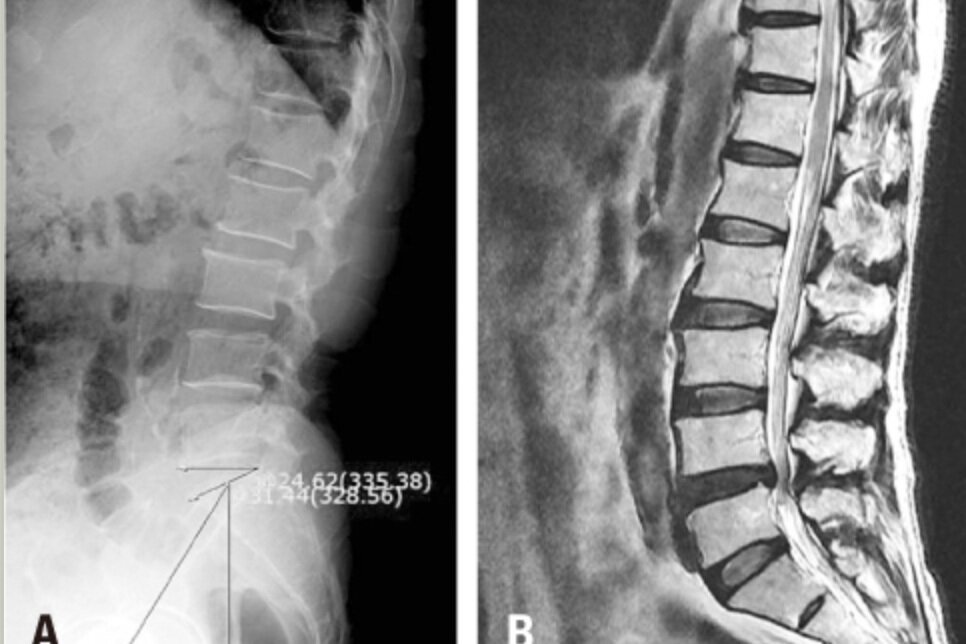You are NOT your scan
Have you ever been told you have a disc bulge in your lower back? Or that your knee is so worn out it’s “bone on bone”? Perhaps you have been told there is nerve damage in your neck and you will always have neck pain from now on? We often hear this type of story when we first meet patients and it is no surprise that they are really concerned for their future health and well-being as a result. The language used in explaining to patients what is wrong is so critical in you may understand what is wrong and what your future might be. Unfortunately too often a result from an x-ray or scan has been interpreted as a “forever” condition, rather than a temporary one. In the first example, the explanation could have been:
“This scan shows you have a small disc bulge in your lumbar spine. Disc bulges generally do not cause ongoing pain and in fact many people have them who don’t have any symptoms at all. I can see on your scan that no nerves are compressed and there is plenty of space for them in the spinal canal and where they exit the spine. Right now your symptoms indicate that there is some inflammation in the lumbar spine. That will settle down and the pain associated with that will stop.”
Can you see how the perceived threat you might feel with the first statement, because all you heard was “disc bulge”, could lead to you thinking you have a back problem for life? With just a few more sentences that disc bulge is much less threatening and you understand that the pain you are experiencing is a temporary thing.
X-rays, CT scans, ultrasounds, MRIs….these are the most commonly used imaging techniques that patients have to help diagnose an injury. They can be a wonderful tool in determining what might be wrong with you. They are an excellent tool particularly in diagnosing acute trauma or illness. A fractured bone, pneumonia, or a kidney stone (and there are countless more) can all be demonstrated very clearly on an x-ray. For many common musculoskeletal conditions however, the picture is not so clear, especially in the case of longstanding pain. Scans can show a variety of findings that may or may not relate to your pain.
Scan results are ONE piece of the puzzle, and a valuable piece of supporting evidence when combined with a thorough medical history and physical examination by a qualified professional - we can determine if the results of your scan correlate with your history of injury and the thorough assessment we do. In some cases focusing on just the results may lead to chronic pain, avoiding physical activity due to fear of making things worse, lost days of work and play, and psychological distress.
One study (1) looked at MRIs of elite athletes competing in the Rio De Janeiro 2016 Summer Olympic Games. This study concluded that a relatively high number of athletes had moderate to severe spinal disease according to their MRI results. Despite these seemingly “bad” findings, these athletes were successfully competing at the highest level.
Another really interesting study (2), completed a review of imaging features of spinal degeneration in people who have no symptoms. They produced the table below to summarise just how common imaging findings are in people without any symptoms of back pain.
Many people without symptoms have findings on imaging, showing that visual evidence of disease is not a reliable indicator of pain.
Signs of degeneration (“wear and tear”) in your spine will increase with age, even if you have no pain!
Put simply:
A) There are many conditions in the body where the findings on an Xray or scan have no correlation with the amount of pain you feel.
B) In the case of the spine, the number of findings of degeneration will increase with age, no matter whether you have pain or not.
C) Only after the pictures are examined and reported on (by the expert radiologists we are fortunate to have in Ballarat), and considered in the context of the history and physical examination can a diagnosis be made.
At Eureka Osteo our physios and osteos are skilled in knowing when it is appropriate to refer you for x-rays and scans, and can explain your results to you clearly. We promise not to make a diagnosis based solely on your images; you are a whole lot more than that!
References:
1) Wasserman MS, Guermazi A, Jarraya M, et al. Evaluation of spine MRIs in athletes participating in the Rio de Janeiro 2016 Summer Olympic Games. BMJ Open Sport & Exercise Medicine 2018;4:e000335. doi:10.1136/ bmjsem-2017-000335
2) Brinjikji W et al,. Systematic literature review of imaging features of spinal degeneration in asymptomatic populations. AJNR Am J Neuroradiol. 2015 Apr;36(4):811-6. doi: 10.3174/ajnr.A4173. Epub 2014 Nov 27



